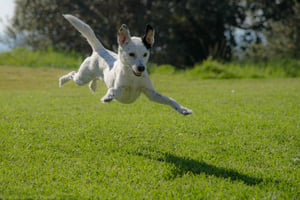Are you looking for the best tips and tricks on Bernese Mountain Dog training? This comprehensive...
A Comprehensive Guide to Bernese Training
Bernese training is a great way to ensure your beloved Bernese Mountain Dog is happy and healthy. This guide will provide you with the necessary information to ensure your Bernese is well-behaved and obedient. It will look at the different methods of Bernese training, the benefits and potential risks, and how to get the most out of your Bernese training sessions.
What is Bernese Training?
Bernese training is the process of teaching your Bernese Mountain Dog the behaviours you want them to exhibit. This includes basic commands such as 'sit', 'stay', 'come', 'down', and 'stand', as well as more complex behaviours such as retrieving items, walking on a leash, and responding to hand signals. Bernese training requires consistency, repetition, and patience in order to be successful.
How to Get Started with Bernese Training
Before you start Bernese training, it is important to ensure that your Bernese is healthy and up to date on all their vaccinations. It is also important to make sure that you have the right equipment, such as a leash and collar, treats, and toys. Once you have all the necessary items, you should create a plan for Bernese training. This plan should include the behaviours you want to teach your Bernese, the commands you will use, and how often you will train.
Methods of Bernese Training
There are several methods of Bernese training, including positive reinforcement, clicker training, and operant conditioning. Positive reinforcement is the most popular method of Bernese training, and involves rewarding your Bernese with treats or praise when they exhibit the desired behaviour. Clicker training involves using a clicker to mark the desired behaviour, while operant conditioning involves using rewards and punishments to shape your Bernese’s behaviour.
Benefits of Bernese Training
Bernese training can provide numerous benefits for both you and your Bernese. It can help to create a stronger bond between you and your Bernese, as well as increase their obedience and reduce their anxiety. Bernese training can also help to keep your Bernese safe, as it can help them to understand safety commands such as 'stay' and 'come' when off leash.
Potential Risks of Bernese Training
While Bernese training can be beneficial, there are also potential risks that should be considered. Training can be stressful for your Bernese, and it is important to ensure that you are not pushing them too hard or using overly-harsh methods. Additionally, it is important to be aware of the potential risks of using treats as rewards, as they can lead to obesity or digestive issues.
Tips for Getting the Most Out of Your Bernese Training
There are a few tips that can help you to get the most out of your Bernese training sessions. First, it is important to keep your sessions short and fun, as long or boring sessions can be counterproductive. It is also important to be consistent with your commands and rewards, as this will help your Bernese to learn faster. Additionally, it is important to practice patience, as learning takes time and your Bernese may not always respond as expected.
Conclusion
Bernese training can be a great way to ensure your Bernese Mountain Dog is happy and healthy. It is important to ensure that your Bernese is healthy and up to date on their vaccinations before beginning Bernese training, and to create a plan for Bernese training. Additionally, it is important to be aware of the different methods of Bernese training and the potential risks. By following these tips and using patience, you can get the most out of your Bernese training sessions and help your Bernese to become a well-behaved and obedient dog.



